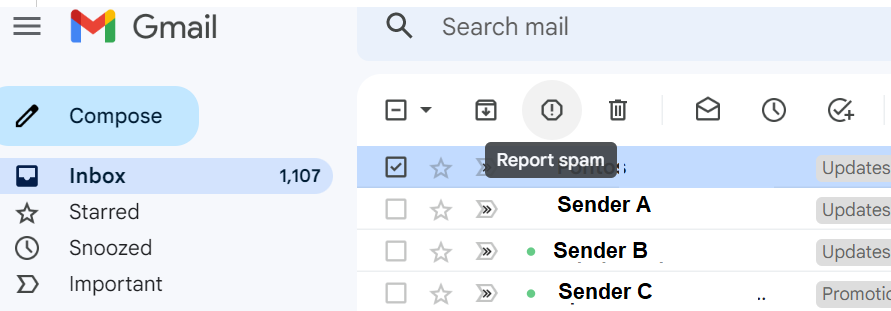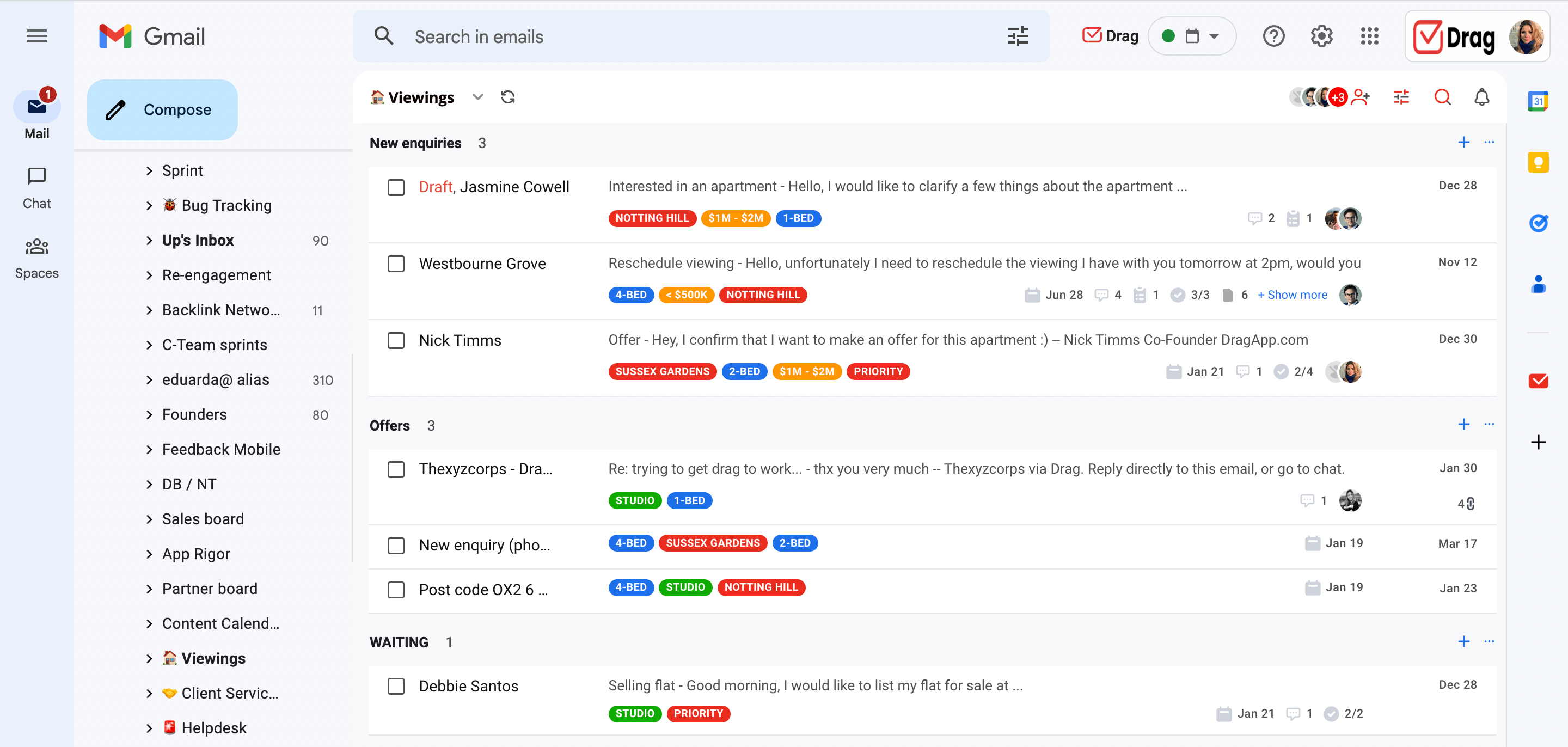
If you deal with spam on your Gmail Shared Inbox, you are not alone. Much like other forms of spam, it leads to cluttered inboxes and miscommunication. After all, if you aren’t able to see your messages clearly, some things get lost.
Now, with a Gmail Shared Inbox, the issue goes deeper. If you have a collective space for collaborators, they all need to visualize what happens. And spam mail ends up hiding relevant conversations.
Spam: why and how it happens
Spam is unwanted or unsolicited electronic messages, typically sent in bulk. They are often sent by marketers or scammers trying to sell products or services, or to phish for personal information. It’s estimated, according to the organization Spamlaws, that around 85% of all sent messages are spam.
Spam can also include malware and viruses, which can harm computer systems and networks. Messages like them are a major problem on the internet, and it can be difficult to prevent.
The usual spam filters can help to reduce the number of unwanted messages that reach a person’s inbox, but, of course, not fully. That’s because spammers typically use techniques to bypass said filters, such as using misspelled words or randomly generated characters.
To avoid spam, it’s important to be cautious when clicking on links in emails or text messages, and to be wary of unsolicited emails or messages. It is also recommended not to share personal information online, not to respond to spam emails, and not to click on links in spam messages.
The issue with spam mail at work
Spam emails can have a significant impact on work emails. They can clog up inboxes, making it difficult for employees to find and respond to important messages. This can lead to delays in completing tasks and can ultimately affect productivity.
Security Risk
The affected by spam Gmail Shared Inbox can also pose a security risk to an organization. If multiple staff members access the inbox, there’s a chance they will click on messages that contain malware or viruses that can harm computer systems and networks.
Additionally, spam emails can be used to phish for sensitive information such as login credentials or financial information, which can result in data breaches and financial loss.
Spam and its digital carbon footprint
One of the less known issues with spam mail, whether it’s on your personal or a shared inbox, is that it comes with a carbon footprint. Yes, digital attachments can be harmful to the environment and the durability of your systems. Each email has a footprint of about 10g of CO2, according to Cleanfox. That is, because of server and data center energy consumption, your emails generate some carbon emission.
To put in numbers, a thousand emails generate about 10kg of CO2. The average car could drive 133km to reach this milestone.
Digital clutter
Ultimately, what people dislike about spam mail is that it’s an annoyance. If you’re trying to browse our inbox, these messages get in the way. And, much like real-life clutter, digital ones tend to pile up if you don’t take action. Therefore, by making sure you clean up often, you find your workspace cleaner and easier to deal with.
Moreover, many spam emails are sent to thousands of recipients at a time, which can cause server overload, this can lead to slowing down of the network, and in some cases, it can cause a complete shut down of the email server.
How to prevent spam
No one likes spam, but there are a few ways to minimize the impact it has on your inbox. Here are five steps to follow for a cleaner inbox:
Use the anti-spam features
Most email clients have a built-in spam filter, but are you using it correctly? While it seems tempting to simply delete a suspicious message, you can tag it as such. On Gmail, this is done by selecting the email(s) and clicking on the caution sign on the top left.
That way, following similar emails will be marked automatically. This cuts down on time wasted sorting through your inbox.

Unsubscribe from mailing
While signing up for newsletters and promotional mailing can be useful, it shouldn’t be overdone. That way, you avoid having too much going on your inbox. Not reading? Unsubscribe!
Change your address
One of the issues with spam is that it often uses data breaches. That is, if your address was leaked somewhere, due to a security issue within a website, you might be on a spam mailing list. The biggest problem here is that scammers use these messages to try and get information.
Changing your address, especially if it’s not public-facing, might be a good idea if your inbox is full of questionable links.
Stay vigilant
Of course, the highest risks come with lack of attention. Scammers rely on the fact that people get a lot of email every single day. So, if they receive a request for information or log in link, they investigate enough. That’s how phishing happens: a technique that uses fake websites (such as banks and social media) as a front for an information mining scheme.
So, while these scams aren’t fully avoidable, it’s essential to stay vigilant. When in doubt, don’t click.
Protect your inbox with DragApp
Drag turns Gmail into your Team’s Workspace – One single place to support customers, manage tasks and close deals, from the place teams love: Gmail. We are a Techstars-backed Company, trusted by 30,000 users around the World.
How to deal with spam on work emails
Of course, one of the things that pose a challenge for collaborators is the need to be constantly updated on email threads and following through with collective tasks.
That means, most of the time, we are checking our inboxes to make sure we don’t miss anything important. That being said, our work inboxes are just as susceptible to spam as the personal ones. This allows for digital clutter to form and dangerous messages to come through.
At work, however, this is far more significant. If you can’t find the regular and time sensitive communication between your team, you might lose on deadlines and collaboration moments. But there are a few solutions:
Forward to a secondary account
The idea here is to have two different emails. One, public facing, gets all messages. Then, you set up a forwarding system that filters them for you.
Use a third-party anti-spam filter
Usually, companies that offer antivirus software have email protection as well. So, you can install these tools on your account and filter accordingly.
Set up a Shared Inbox
If you share an account with collaborators, having a Gmail shared inbox. Instead of having all parties using the same credentials and logging into the account, a shared inbox is accessible through your own account. This cuts down on spam and phishing tries to the main account.
However, since customer support and other company email addresses are public, you need to follow a few tips to avoid spam on a Gmail shared inbox.
First, as you would do with personal emails, tag spam messages accordingly and avoid subscribing to irrelevant emails. Then, use filters in your favor.
DragApp
Instead of email threads, Drag turns your Gmail shared inbox into a fully equipped task manager. Through kanban boards and tagging systems, your team will have a better view of tasks and deadlines.
Other valuable tools are the filters. You can create rules for incoming mail. Relevant messages turn into tasks, quick solutions get automated responses and spam doesn’t reach your Gmail shared inbox.

Gmail Shared Inbox.
Drag turns Gmail into your Team’s Workspace – One single place to support customers, manage tasks and close deals, from the place teams love: Gmail. We are a Techstars-backed Company, trusted by 30,000 users around the World.







